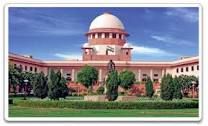https://www.moneycontrol.com/news/business/budget-2020-airconditioned-freight-for-perishable-food-cost-will-be-the-critical-factor-4894101.html
Budget2020
Airconditioned freight? Who will bear the cost?
RN Bhaskar — 1 February 2020
To build a seamless national cold supply chain for perishables, inclusive of milk, meat and fish, the Indian Railways will set up a “Kisan Rail” – through PPP arrangements. There shall be refrigerated coaches in Express and Freight trains as well.
Nirmala Sitharaman in her Budget2020 speech
There are two problems with air-conditioned trains and air-conditioned coaches. They are expensive, both in capex and in operational terms as well. Second, if you are talking about airconditioned trains, you need a dedicated freight corridor. This is because without a dedicated corridor, freight trains are asked to move aside to let passenger trains get priority over right of way. That is why, a freight train from Delhi to Mumbai can take anywhere between 7-10 days, when the journey can be covered in 18 hours.
That is why airconditioned coaches and trains are only used for value-added products, not just plan commodity crops.
Thus to make the airconditioned coaches meaningful, the government will first have to set up food processing facilities to value-add the agricultural produce, give it a longer shelf life, and to allow it to pay the higher freight charges applicable.
Once again the government is talking about air-conditioned freight coaches, without first setting into place food processing and value-addition units. Once again the card before the horse.
The only player who has got his act right is Adani Logistics which has a cold chain facility on the dedicated freight corridor to pick up apples, sort them, preserve them, move them from J&K and Himachal Pradesh and then send them for exports. The other is milk where the white revolution worked on short runs through trains using air-conditioned tankers. Other crops have yet to get their strategies, costings and pricing right.
That needs to be done first.










































COMMENTS